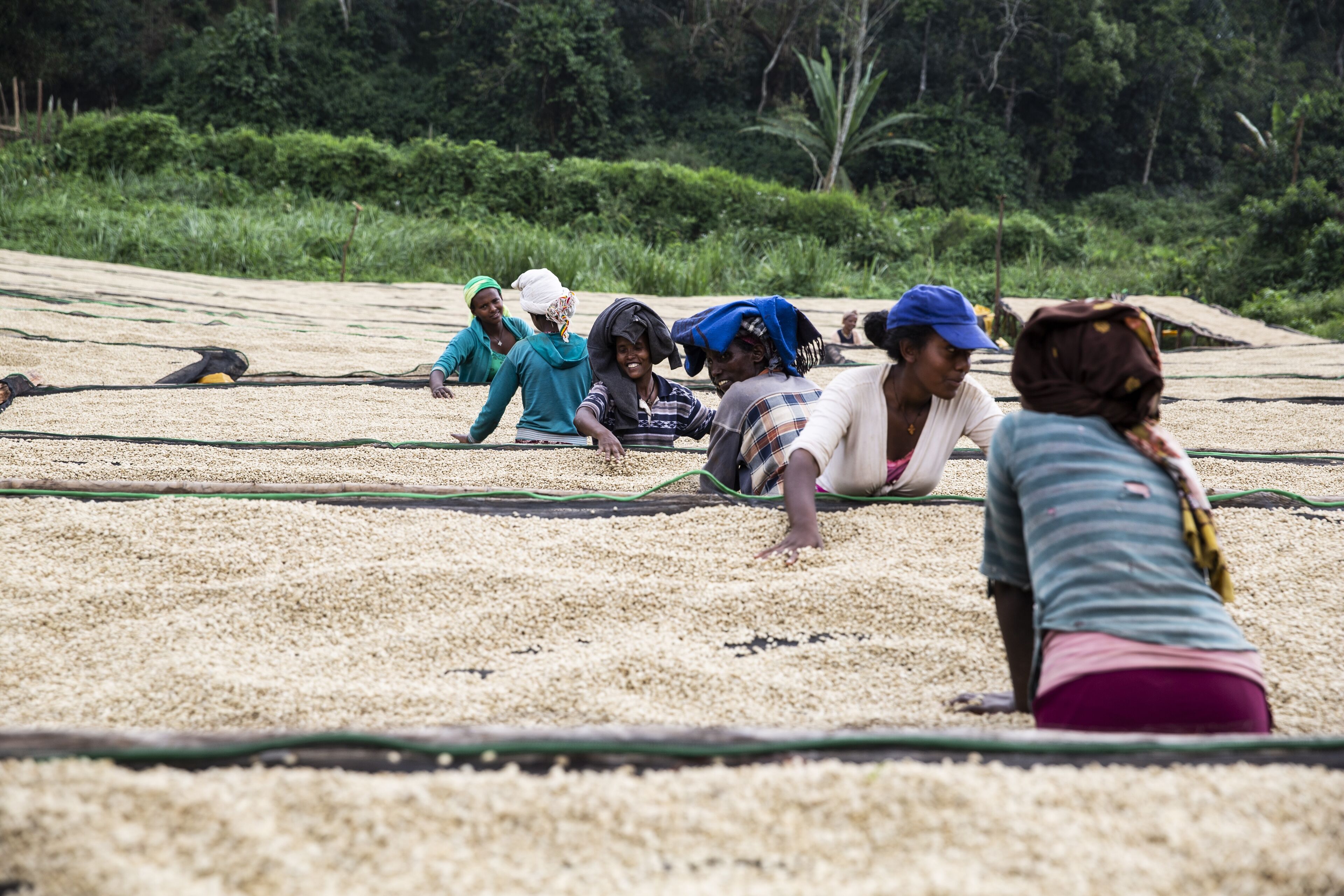
Drying washed coffee in the Anfillo woreda, Ethiopia
Ethiopian coffee grades, what are they?
Are you looking for Ethiopian coffees, and wondering what a Q1 or Grade 2 really means? We explain all you need to know about grades and qualities of Ethiopian coffees. And, of course, how we do it at Belco!
Going from Grade 1 to Grade 5,a coffee grade is evaluated by combining 2 elements: the number of defects of the green coffee, and a tasting note.
An overview of Ethiopian grades
There are two types of grading system in Ethiopia. One is from the Coffee Liquoring Unit (CLU), and another appeared around 2015, under the authority of the Ethiopian Commodity Exchange. The most important for importers and coffee roasters is the CLU one, and this is the one we are going to explain to you.
In the CLU grading system, the green coffee analysis counts for 40% of the grade. It’s called the “raw value” of the coffee, calculated out of 340 grams of coffee. The green coffee analysis consists of counting the number of primary and secondary defects and looking at the appearance and the colour of the coffee beans.
The other 60% of the grade comes from what is called the “cup quality”, of the cup profile. For natural and washed coffees, it evaluates the:
- Cup cleanliness
- Acidity
- Body
- Flavor
How does it work for specialty coffees?
Ethiopian specialty coffee is at least a Grade 3. The grading of Ethiopian specialty coffees is supplemented by Quality, Q1 or Q2, depending on the cupping score.
A Q1 coffee is a Grade 1 or 2, scoring over 85 according to the Q Cupping protocol. A Q2 coffee is a Grade 1, 2 or 3, scoring between 80 and 85. So, a Grade 2 can be a Q1 coffee if the cup is scored 85+, or Q2 if the cup is scored 83.
- Grade 1 (Washed and Natural): < 5 defects, can be a specialty coffee Q1 or Q2
- Grade 2 (Washed and Natural): 5 - 12 defects, can be a specialty coffee Q1 or Q2
- Grade 3 (Only Natural): 13 - 25 defects, can be a specialty coffee Q2
- Grade 4: 26 - 46 defects
- Grade 5: 47 – 86 defects
At Belco, a different gradation
At Belco, we only sell Grade 1, 2, 3 and 4, and adds Microlots to our grading system. If the principles of the grading system are the same, the results are a bit different.
At Belco, a Grade 1 and a Grade 2 can be a natural or a washed coffee. A Grade 1will score above 86, and a Grade 2 above 84. And then, we have Grade 3, only for naturals scoring between 83 and 84. And what about microlots, then? Microlots are coffees scoring above 87.
We often speak of Quality 1 or Quality 2, Q1 or Q2, instead of grades. At Belco, it means the same as grades. So, a Q1 is a Grade 1, and a Q2 a Grade 2.
- Microlots: < 5 defects, scoring above 87 points
- Grade 1 : < 8 defects, scoring above 86 points
- Grade 2: < 12 defects, scoring above 84
- Grade 3 (only naturals): < 20 defects, scoring above 83
Type ABCDE, what was it?
Ethiopia also used to classify its coffees according to a specific system, in addition to the grades. You may still hear about it, but this system is no longer used. Types A, B, C, D or E were used to identify specific cup profiles, in addition to the quality defined by the grade.
The type thus corresponded to a geographical origin, a locality where the typical sensory profile of the appellation could be found. Type A, for example, is typical of the Sidama appellation, with mellow acidity and notes of apricot.
Thanks to Fantanesh for her careful review of this article!
Did you like this article? Share it with your community:
